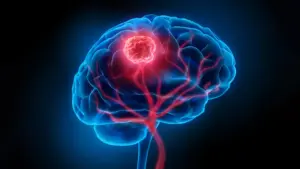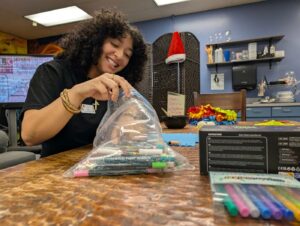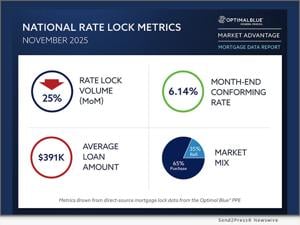
The novel GPRC5D-targeted CAR T-cell therapy, known as arlocabtagene autoleucel (arlo-cel), has demonstrated significant efficacy for patients with relapsed or refractory multiple myeloma. This treatment option is particularly relevant for those who have previously undergone BCMA-directed therapies. According to Dr. Omar Nadeem, a medical oncologist at the Dana-Farber Cancer Institute and assistant professor of medicine at Harvard Medical School, findings from a phase 1 trial reveal impressive response rates and manageable safety profiles.
Presented at the 22nd Annual International Myeloma Society Meeting held in Toronto, Canada, from September 17-20, 2025, the trial (NCT06121843) followed patients who had received one to three prior lines of therapy. At a median follow-up of 18.3 months, results showed an overall response rate (ORR) of 94%, including a remarkable 71% complete response (CR) rate. Moreover, 56.3% of evaluable patients achieved minimal residual disease (MRD) negativity, all of whom reached MRD-negative CRs. The median progression-free survival (PFS) was recorded at 24.3 months.
Dr. Nadeem emphasized the significance of these results, particularly for patients with earlier lines of treatment. “Arlo-cel was previously studied in patients who had three or more lines of therapy and demonstrated a high ORR, including in those who had prior BCMA therapy,” he explained in an interview with OncLive®. The ongoing investigation includes a cohort of patients who received arlo-cel after one to three prior therapies, addressing the potential for this treatment to induce deep and durable responses.
Patients in this specific cohort received arlo-cel at a dosage of 1.5 x 10^6 cells. Despite being considered earlier-line therapy, the median number of prior therapies among participants was two, indicating a refractory population.
The safety profile of arlo-cel proved reassuring, as cytokine release syndrome (CRS) occurred in 84% of patients, yet no grade 3 or higher CRS was reported. Neutropenia was also observed in 84% of participants, but all cytopenias ultimately resolved. Infection rates were relatively low, with 55% of patients experiencing infections, and no grade 3 or higher infections noted.
While some on-target, off-tumor effects associated with GPRC5D targeting were observed, such as dysgeusia, skin, and nail-bed changes, these effects were transient and did not persist. Two patients experienced neurotoxicities, including ataxia and gait disturbances, which were classified as grade 2 or less and continued at the data cutoff after approximately 18 months of follow-up.
The results indicate that responses deepened over time, with around 75% of patients maintaining a response at one year and 62% of responders sustaining ongoing responses at the time of data cutoff.
Currently, there are several BCMA-directed CAR T-cell therapies approved, alongside multiple BCMA-directed bispecific antibodies. However, the approval landscape for GPRC5D-targeting agents remains limited, with only one such agent, talquetamab-tgvs (Talvey), currently available. Dr. Nadeem pointed out that this creates an unmet need for a CAR T-cell therapy targeting GPRC5D, which has demonstrated strong efficacy. He noted that the transient adverse events associated with GPRC5D targeting suggest that arlo-cel could provide a vital new option for patients requiring CAR T-cell therapy aimed at different antigens.
As the search for effective treatments for relapsed or refractory multiple myeloma continues, the promising results of arlo-cel highlight the potential for innovative therapies to make a significant impact in patient outcomes.





